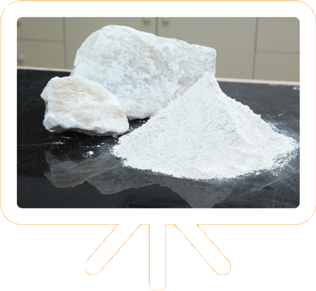
Gypsum is a common material with low density widely used as internal plaster coating for every kind of building, particularly residential buildings, schools, hotels and hospitals. Gypsum’s characteristics make it idea for interior coating: it regulates atmospheric humidity, and absorbs water when the amount of water vapour increases in the atmosphere. Naturally fireproof, Gypsum also releases water vapour when heated which prevents its temperature from increasing above 100 degrees Celsius during dehydration and protects building material from fire.
Plaster low heat conductivity means gypsum can also be used to improve insulation, which has a great importance considering high consumption of electricity for air condition. According to a comparison between gypsum plaster and traditional cement plaster, lightweight gypsum plaster decreases electricity consumption by 12% for air conditioning.
Its special formulated composition also improves sound insulation by attenuating sound pressure, therefore reducing sound transmission.
The range of plaster coatings varies according to the method of application or type of ingredients used. However, the majority is lightweight by adding perlite, resulting in greater productivity than standard sprayed coatings. This lightweight spray plaster is applied through a plaster machine, giving a much higher plastered surface than manual application.
Gypsum has been used since ancient times to build monuments that have lasted for centuries, such as Egypt’s Great pyramid of Giza the only surviving wonder of the ancient world. Archaeologists have found vestiges of gypsum on walls dating back to 9000 BC. In Anatolia, Turkey, and traces of gypsum have also been found in ancient Egypt and Greece.
After being quarried from the mine it is then crushed, calcined and ground into stucco plaster that is used for a variety of purposes, such as coating for walls and ceilings of buildings.
Prescribers (architects and design offices) and inspection agencies expect the plaster to have a hard, smooth surface with no cracks, fungi or other defects once the plastering is finished. These properties determined the plaster coating aptitude to fulfil its decorative functions such as to receive paint or wall paper and reflect the requirements of those who will live in the completed premises.
Depending on the applications method and environmental condition, Gypsum-based plaster working time is approximately 2 to 3 hours, and painting can be applied one week to ten days after completion. This gives sufficient time for smoothing and obtaining a perfect finish, while allowing contractors to complete projects in a timely manner.
Gypsum plaster has a very smooth surface, which reduces the cost or preparation for painting. It does not require nay bonding compound or cement spray for adhesion to the substrate other than fair face concentrate. Gypsum plaster also does not require curing and its composition prevents occurring of cracks.
In addition to the performance characteristics, the uniformity and consistency of these properties over time is also important. Uni-Plaster M as Gypsum-based plaster, produced locally with global expertise, has all of the advantages and ensures top quality finishes, saving time and money.